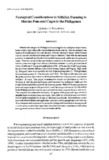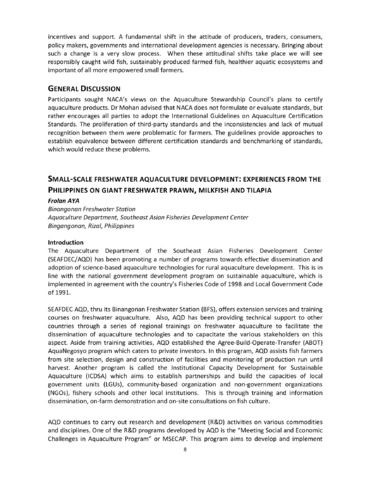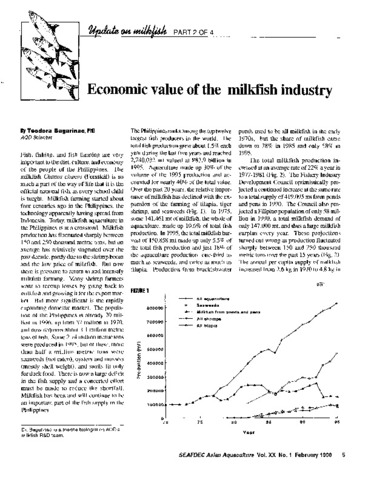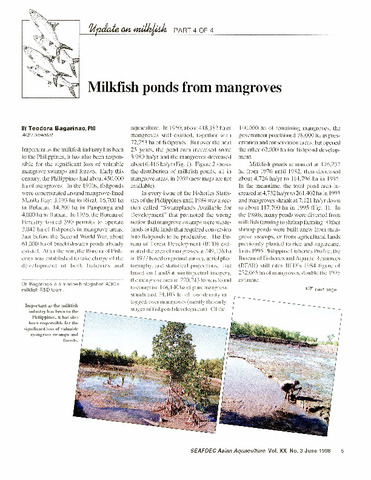Ecological considerations in milkfish farming in marine pens and cages in the Philippines
Share
Abstract
Milkfish farming in the Philippines has a long history and great importance, being widely regarded as the way to domestic food security. But the industry has faced new challenges in the past decade, with the advent of many other farmed aquatic species, mostly cash crops and "export winners," and with the increased pressure to intensify production in brackishwater ponds and in marine pens and cages. There are no up-to-date government statistics on the area and production of marine pens and cages, but industry insiders estimate a yearly production of about 25,000 mt of sea-grown milkfish in 1996 - 1998, mostly from Pangasinan, but also from Quezon, Davao, Cebu, Bohol, Panay, Samar, and Negros. High yields (2 -38 kg/m3) were made possible by very high stocking rates (3 -75 fingerlings/m3) and feeding rates (2-4 kg feed per kg of fish). The high production costs and the pollution from feed wastes and fish metabolites have stopped most operations within 1 - 2 years. This paper examines the trends and problems in milkfish farming in marine pens and cages, and discusses the ecological limits and the projected ecological footprint of this farming system. Milkfish farming in marine pens and cages, as presently practised, is not the magic solution to the fish deficit in the Philippines and is not an appropriate technology to promote on a wide scale. The required investment is enormous. Properly made pens and cages set up in suitable clean-water locations cost much. The ability of milkfish to ensure domestic food security is negated by the use of fishmeal-based feeds. Fish feeds use up fish meal and other fisheries and agriculture products used by people and other sectors. If marine pens and cages must be promoted, integrated coastal area management, an informed precautionary approach, better infrastructure, and improved feeding management are important to ensure sustainability.
Suggested Citation
Bagarinao, T. (1998). Ecological considerations in milkfish farming in marine pens and cages in the Philippines. UPV Journal of Natural Sciences , 3(1), 67-82. http://hdl.handle.net/10862/1756
Subject
Taxonomic term
Collections
- AQD Journal Articles [1249]
Related items
Showing items related by title, author, creator and subject.
-
Small-scale freshwater aquaculture development: Experiences from the Philippines on giant freshwater prawn, milkfish and tilapia
Aya, Frolan (Japan International Cooperation Agency, 2013-12)The Aquaculture Department of the Southeast Asian Fisheries Development Center (SEAFDEC/AQD) has been promoting a number of programs towards effective dissemination and adoption of science-based aquaculture technologies ... -
Economic value of the milkfish industry
Bagarinao, Teodora (Aquaculture Department, Southeast Asian Fisheries Development Center, 1998)A brief description is given of the milkfish (Chanos chanos) farming industry in the Philippines. Over the past 20 years, the relative importance of milkfish has declined with the expansion of tilapia, tiger shrimp and ... -
Milkfish ponds from mangroves
Bagarinao, Teodora (Aquaculture Department, Southeast Asian Fisheries Development Center, 1998)




